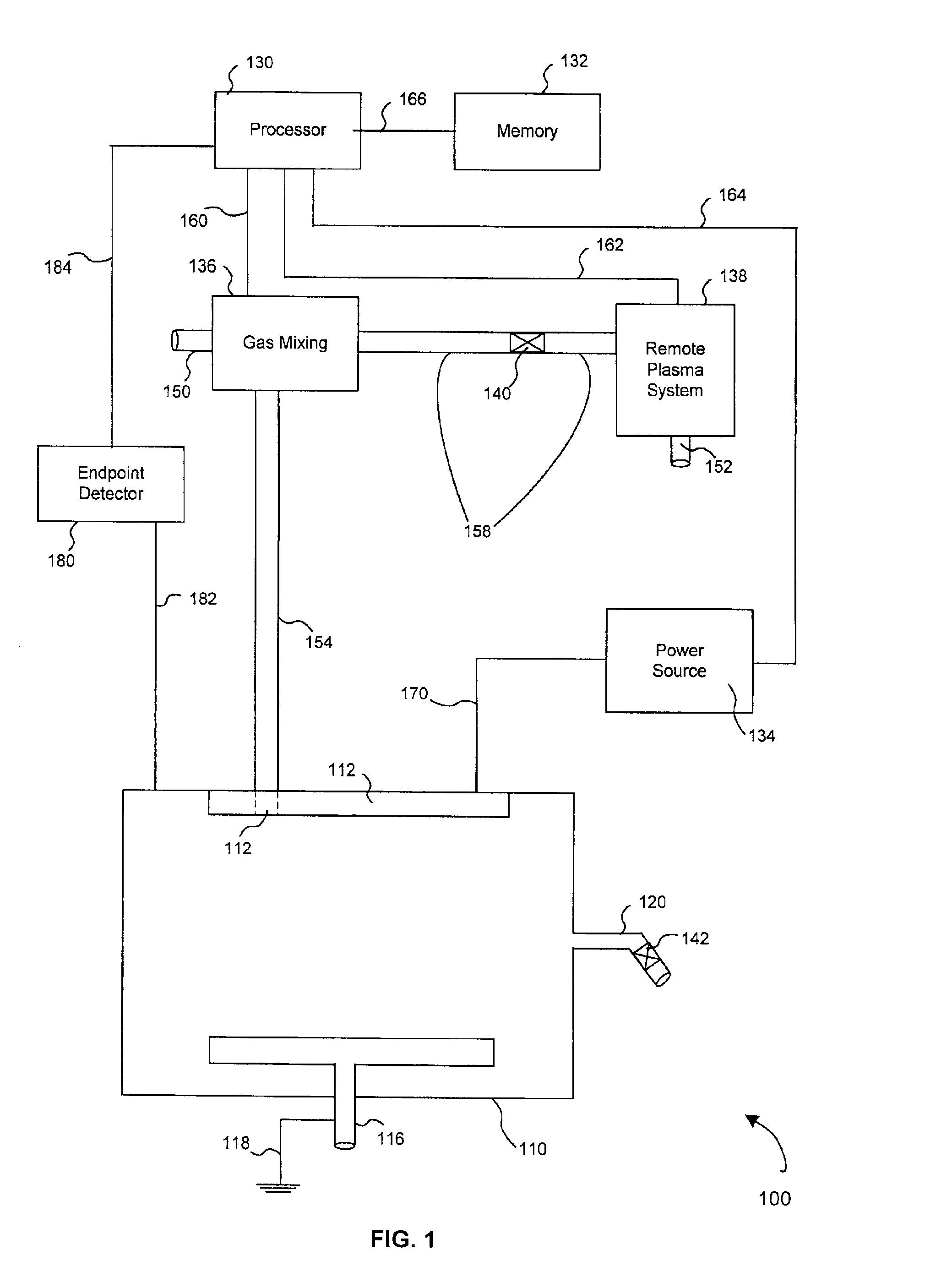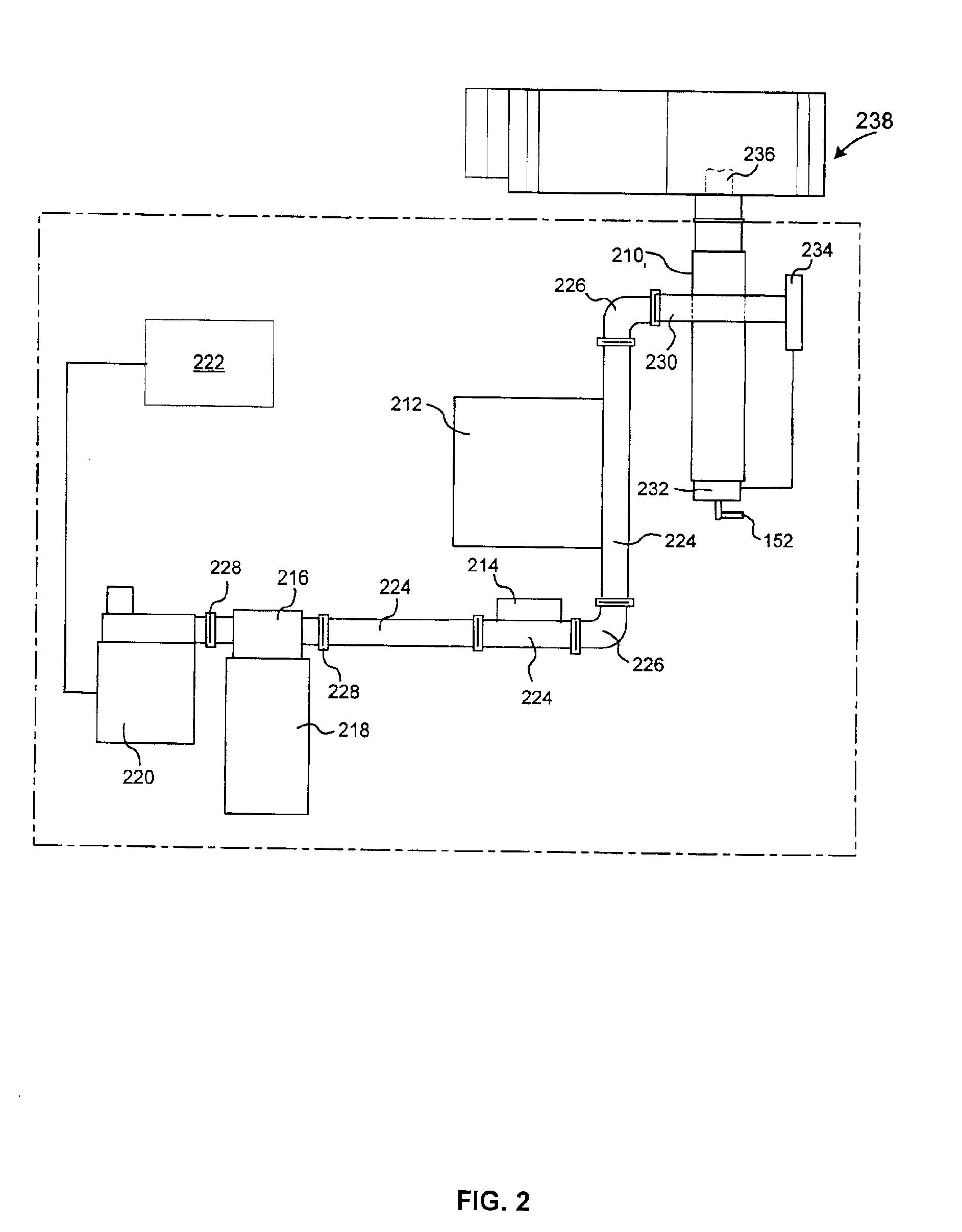Enhanced remote plasma cleaning
- Summary
- Abstract
- Description
- Claims
- Application Information
AI Technical Summary
Benefits of technology
Problems solved by technology
Method used
Image
Examples
Embodiment Construction
The present invention provides systems and methods for cleaning contaminants from equipment. An embodiment of the present invention is particularly suited for cleaning equipment including, but not limited to, parallel plate reactors. However, it should be recognized that the present invention is applicable to cleaning a wide variety of equipment.
Elements of the present invention are described in relation to a diagram of a cleaning system 100 as illustrated in FIG. 1. Referring to FIG. 1, some embodiments of cleaning system 100 include an equipment to be cleaned 110, which in an embodiment is a process chamber used to process semiconductor substrates. Additionally, an embodiment of system 100 includes a processor 130, a processor memory 132, a local plasma system (described below), a gas mixing block 136, a remote plasma system 138, and an endpoint detector 180. Equipment to be cleaned 110 includes, but is not limited to, a faceplate 112, a faceplate orifice 114, a bottom faceplate 1...
PUM
| Property | Measurement | Unit |
|---|---|---|
| Efficiency | aaaaa | aaaaa |
| Plasma power | aaaaa | aaaaa |
Abstract
Description
Claims
Application Information
 Login to view more
Login to view more - R&D Engineer
- R&D Manager
- IP Professional
- Industry Leading Data Capabilities
- Powerful AI technology
- Patent DNA Extraction
Browse by: Latest US Patents, China's latest patents, Technical Efficacy Thesaurus, Application Domain, Technology Topic.
© 2024 PatSnap. All rights reserved.Legal|Privacy policy|Modern Slavery Act Transparency Statement|Sitemap



